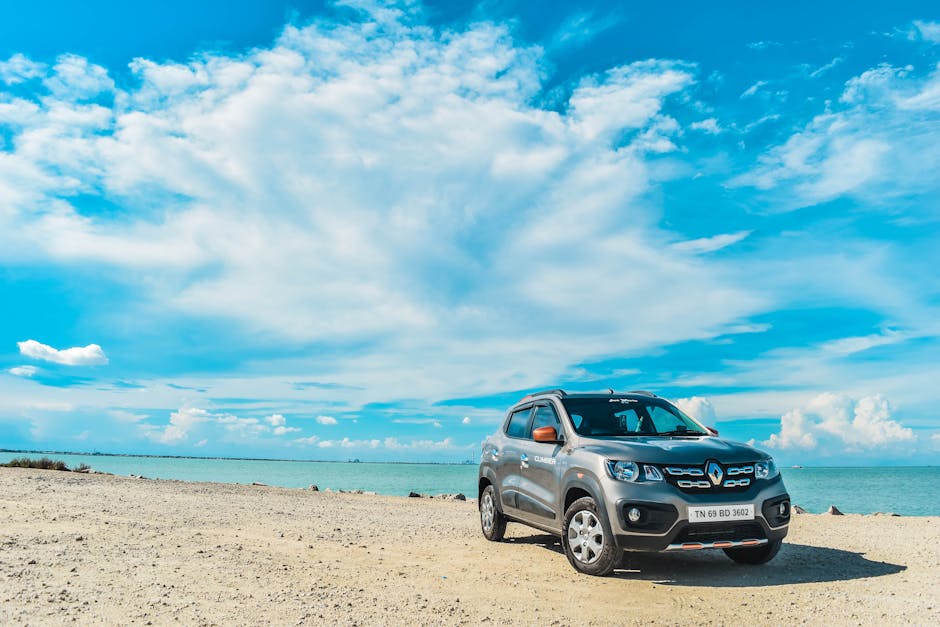 Swipe for more categories
Swipe for more categories 
Driving Tips Parallel Parking
Warning: Undefined variable $post_id in /var/www/dsw/wp-content/themes/DriveSmart_2024_v1.1/single.php on line 27
July 14, 2023
Warning: Undefined variable $post_id in /var/www/dsw/wp-content/themes/DriveSmart_2024_v1.1/single.php on line 75
Driving Tips Parallel Parking
Warning: Undefined variable $post_id in /var/www/dsw/wp-content/themes/DriveSmart_2024_v1.1/single.php on line 76
July 14, 2023
Parallel parking sometimes feels like the Mount Everest of driving skills – impossibly hard, but potentially rewarding. As tricky as it may be, it’s an essential expertise if we want to be considered a competent and confident driver. There’s definitely an art to executing a smooth parallel park, especially in tight city spaces or busy streets, but don’t let the thought of it daunt you.
This post is here to take you through the basics of parallel parking, demystify the process, and hopefully make it a little less scary. You can think of this as your road map and guide, helping to steer you through the complex maneuvers and tight turns of parallel parking.
The Fundamentals of Parallel Parking: This will include information about the prerequisites for parallel parking, talking about what kind of spaces and vehicles are suitable for it.

Parallel parking, an essential skill for every driver, comes into play when you need to squeeze your vehicle into a tight spot between two others on the street. It is particularly useful in urban areas where parking is scarce.
Before attempting to parallel park, it is important to gauge whether your vehicle can comfortably fit into the available space. As a rule of thumb, your intended parking spot should be at least one and a half times longer than your vehicle. Anything smaller would be a tight fit and pose a significant risk of damaging your vehicle or those around it.
Additionally, knowing the dimensions of your vehicle, back and front, is crucial. Pertaining not only to safety, but successfully completing the maneuver without any contact to adjacent vehicles. Practice and understanding your car’s dynamics play a significant role in perfecting this skill.
Identifying Suitable Parking Space: Giving steps on how to identify the correct and secure place for parallel parking.

Parallel parking begins with identifying a suitable parking space. But how do you gauge this?
Firstly, ensure the space you select is at least 1.5 times the length of your car. This gives adequate room for maneuvering without hitting the adjacent vehicles.
Furthermore, inspect the environment. Check the curb height and avoid spaces that have uneven surfaces or obstructions which could damage your tires or undercarriage. Park far from fire hydrants, driveways, or other restricted areas.
Consider safety aspects too; well-lit spaces are preferable over dark, secluded spots. Also, ensure your vehicle does not obstruct pedestrian paths.
Lastly, remember, your skills and comfort level matter. If the gap is tight, don’t force it. There’s always another spot. It’s better to keep searching than risk a collision.
Parallel parking is smooth sailing once you master the art of choosing the right space.
Checking Mirrors and Blind Spots: This section highlights the importance of using car mirrors and checking blind spots before attempting to park.

Before making any parking maneuver, it’s vital to have a clear understanding of your surroundings.
Start by using your car’s mirrors. Your rear-view mirror offers a broad outlook of what’s behind you, while the side mirrors provide angles not fully covered by the rear-view.
However, mirrors can’t fully eliminate blind spots – areas that mirrors can’t fully capture. This is why checking blind spots manually is a crucial step.
To check your blind spots while parking, make it a habit to look over your shoulder. This lets you notice any hidden pedestrians, cyclists, or other vehicles that could potentially cause an accident.
The combination of utilizing your car mirrors and checking your blind spots will give you a full 360-degree awareness. This is an essential step that guarantees safer and smoother parking, particularly while parallel parking.
Positioning Your Vehicle Correctly: Offering a step-by-step guide on how to properly align your car with the vehicle in front prior to parallel parking.
Parallel parking begins by positioning your vehicle correctly. Here is a step-by-step guide:
1. Identify a free spot that’s approximately 1.5 times the length of your car. 2. Align your vehicle parallel to the car parked in front of the empty spot, maintaining about 2 feet distance.
3. Ensure your back bumpers are in line with each other.
4. Shift in reverse gear and check your mirrors and blind spots for obstructions.
5. Begin steering your car gradually towards the parking spot.
Positioning your vehicle right serves as a solid foundation for flawless parallel parking. It is integral to effective use of space and preventing any collision or damage to adjoining vehicles. This simple approach guarantees a perfect park, every single time. Let shifting in style make heads turn! Remember, practice is key to mastering this skill.
Steering and Reversing into the Parking Slot: Detailed steps explaining how to correctly steer and reverse your car into the identified parking slot.

Photo by Rene Asmussen on Pexels
Photo by Aleksey Kuprikov on Pexels
Parallel parking requires accurate steering and careful reversing. Begin by aligning your car’s rear bumper with that of the car in front of the parking space.
Remember, keep around two feet of space between your car and the one beside you.
As you start reversing, turn your steering wheel towards the curb. This will allow your vehicle to start maneuvering into the spot.
Once your front tire has lined up with the other car’s rear bumper, steer sharply away from the curb. Continue to reverse and keep a vigilant eye for any potential obstacles.
When your car has entered the spot entirely, straighten the wheels and align your car within the space.
The key here is patience.
Parallel parking is an art, and like all art forms, it takes practice. Following these steps consistently will surely make parallel parking less intimidating.
Straightening and Centering the Vehicle: Tips on how to straighten your vehicle and align it correctly with the other parked cars.

Parallel parking can often be challenging but with the right approach, you can become pro in no time. First, ensure your vehicle is in a good position.
Aim to keep it straight and centered.
One might wonder, how exactly is that done? Here’s a tip: Use the car in front as a guide. Observe the alignment of the rear wheels in relation to the curb.
Gradually steer your vehicle in the same direction until you’re parallel. This aids not just in keeping your vehicle straight, but also ensures you’re in line with the other parked cars.
Remember to constantly check both, your rear and side mirrors. Frequent checking is integral for the precise alignment and avoiding any potential dent or scratch.
With practice and patience, you’ll master the art of straightening and centering your vehicle in no time.
Checking Out After Parking: In this part, we give advice on double-checking the position of the car to ensure it is suitably parked.

After you have successfully maneuvered your vehicle into the parking spot, it’s important to take a moment to assess the position. Is your car aligned properly? Your car should ideally be around 12 inches away from the curb.
Look at the cars in front and behind. Ensure you’ve left enough space for them to comfortably get in and out. If not, you might need to adjust your position slightly.
Lastly, exit your car and visually inspect if any part of your car extends onto the crosswalk or no-parking zones, which may lead to a fine or obstruct pedestrian pathways.
Remember, proper parking doesn’t end when the engine is turned off. It’s about making sure your vehicle is parked in a secure, considerate, and legal manner. Double-checking your car’s position is a small step that goes a long way in ensuring this.
Common Mistakes to Avoid While Parallel Parking: Discussing common errors that drivers make during parallel parking and providing tips on how to avoid them.

Parallel parking can be tricky, even for experienced drivers. One common mistake is not properly gauging the size of the parking spot. Always ensure the spot is large enough for your vehicle to comfortably fit. Secondly, improper alignment often leads to unsuccessful attempts. When aligning your vehicle, start by positioning your car parallel to the car in front of the parking spot.
A prevalent error is neglecting to use mirrors adequately. Your mirrors give you a realistic view of your surroundings, so use them wisely. Lastly, many drivers let anxiety get the better of them. Remember, patience is key – rushing often leads to unnecessary mistakes.
Anticipating these common errors and consistently practicing the correct technique will considerably improve your parallel parking skills. With time, these strategies will become second nature.
"> /var/www/dsw/wp-content/themes/DriveSmart_2024_v1.1/single.php on line 177
">
"> /var/www/dsw/wp-content/themes/DriveSmart_2024_v1.1/includes/quote-modal.php on line 8
">


